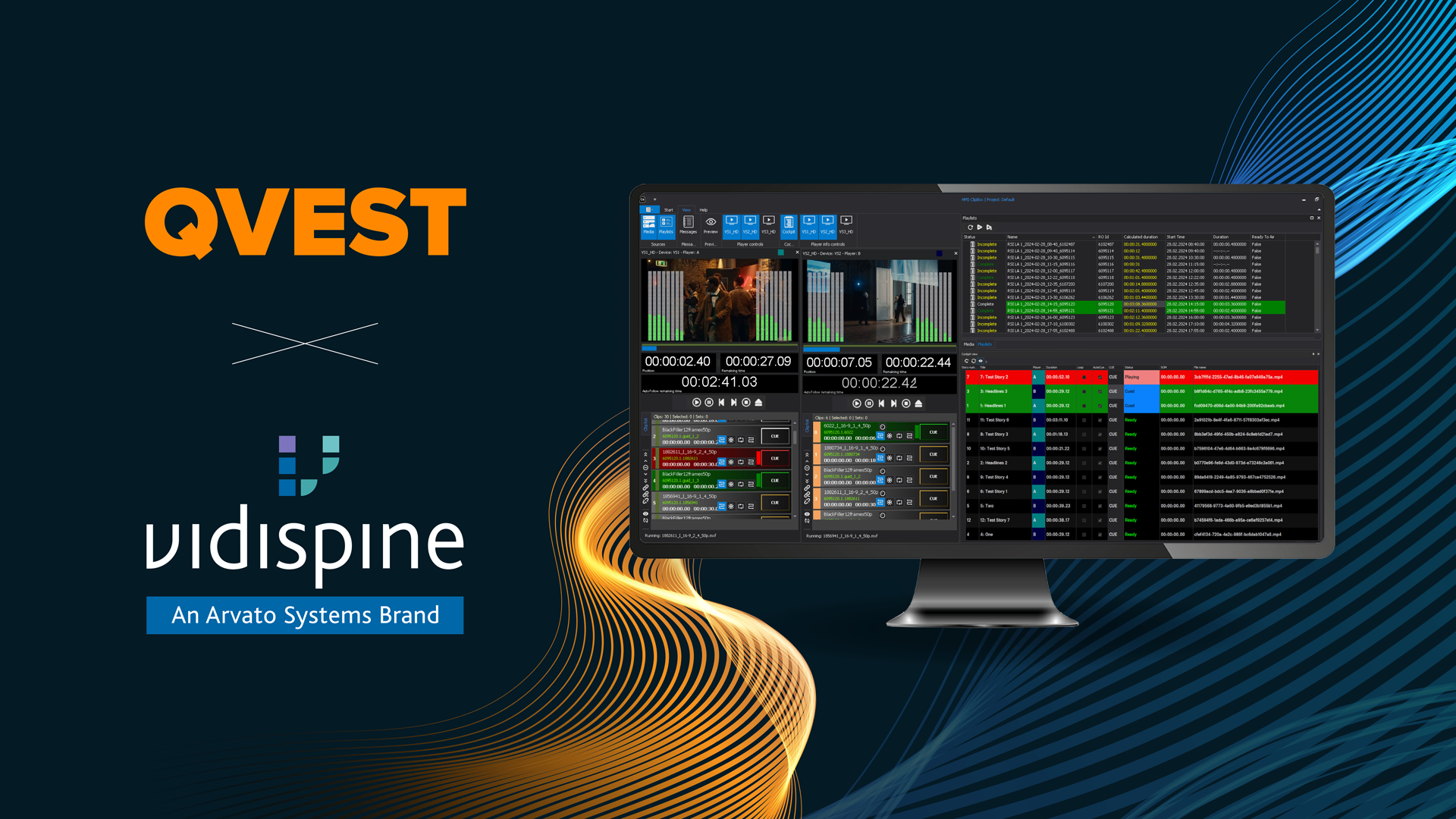Qvest Unveils New Clipbox Studio Server Leveraging Arvato System’s Vidispine WRE at IBC 2024
Qvest clipbox with the Wireless Render Engine (WRE) is especially well-suited to news workflows

AMSTERDAM—Qvest has introduced a new version of its clipbox studio server designed for ingest and playout with full support for the new renderless workflow the relies on the Web Render Engine (WRE) from Arvato System’s Vidispine brand at IBC 2024, which concludes here today.
The latest version of clipbox will give video editors, journalists and others in the newsroom a tighter collaborative workflow and reduced production delays, the company said.
The new version offers users greater customization flexibility for their ingest and studio playout workflows, especially in fast-turnaround news workflows where every second counts. It also provides full support for real-time rendering with transition effects, so users can play out sequences directly without requiring a video switcher, it said.
Other benefits include clipbox’s ability to create proxy files in parallel to either HD or UHD recording that can be opened and edited during ingest. These files are also fully synchronized with the full resolution assets, saving editors time otherwise spent waiting for the recording to be finalized before it can be edited.
“Customers all over the world are already using clipbox for their studio ingest and playout. It’s exciting to think about how much more efficient we’ll be able to help make their workflows with this latest version, while of course continuing to be the most cost-efficient newsroom studio server available,” said Frank Mistol, managing director of Qvest.
The renderless workflow created by the Web Render Engine was developed by Arvato Systems’ Vidispine team. It is designed to save editors time regardless of where they are. With this in place, multiple editors can work on the same content at the same time without needing to wait for any assets to render, the company said.
With clipbox supporting WRE sequences natively, a unique fast-turnaround workflow is created with no videos needing rendering in advance. Even transitions can be executed in real time. The workflow enables video clips to play out from shared memory, removing the need to copy them at the expense of time or costs. It also supports playout of sequences while content is still being recorded, which allows time delay playback, it said.
Get the TV Tech Newsletter
The professional video industry's #1 source for news, trends and product and tech information. Sign up below.
“Vidispine’s Web Render Engine revolutionizes production by allowing content to be stored and managed efficiently without creating new files for every sequence. Only metadata is generated when users edit a sequence, eliminating the need for file movement or rendering. This enables multiple editors to work simultaneously on the same content from anywhere,” said Karsten Schragmann, head of product management at Vidispine.
See Qvest at IBC 2024 Stand 10.C24.
See Vidispine at IBC 2024 Stand 7.A15.
More clipbox information is available on the Qvest website.
More Web Render Engine information is available on the Vidispine website.
Phil Kurz is a contributing editor to TV Tech. He has written about TV and video technology for more than 30 years and served as editor of three leading industry magazines. He earned a Bachelor of Journalism and a Master’s Degree in Journalism from the University of Missouri-Columbia School of Journalism.

